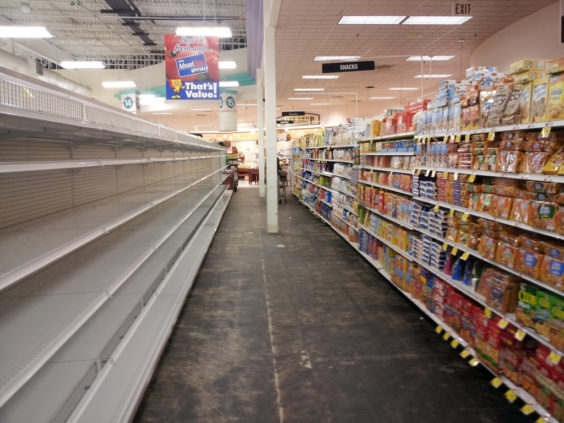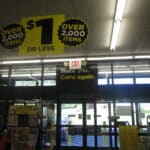
There are few things more frustrating about grocery shopping, than showing up at the store and finding out that they don’t carry a favorite product anymore. On the flip side, there are few things more frustrating for stores, than carrying an item that sits on the shelf because no one but you ever buys it.
So what’s a store to do? It can either keep stocking its shelves with items that may never actually sell, or it can try what a couple of major retailers are in the process of doing – getting rid of the things that few customers want, at the risk of disappointing those who do.
Most supermarkets aim to be, well, “super” and offer anything and everything you’ll ever need. But that can lead to option overload, as a recent Consumer Reports survey found. 36% of grocery shoppers in the survey said, when faced with shelves full of dozens of varieties of the same product, they were “overwhelmed by the information they had to process to make a buying decision.”
So Food Lion, for one, is planning to trim the fat and ease up on many of the options. The North Carolina-based grocery chain’s parent company Delhaize has announced that Food Lion will be getting rid of thousands of items in its stores. Out of some 19,000 products carried in the typical Food Lion, “we will discontinue 6,700 of them while adding 3,300 new items,” Delhaize CEO Franz Muller said. As a result, “there will be roughly 50% change to the overall center store assortment” and an 18% net reduction in available products.
So why the changes? Delhaize explained that it wants to provide a “relevant” and “efficient” assortment of products that its customers actually want – and not everything under the sun.
Dollar General is in the midst of a similar effort. The discount chain’s CEO has said that his stores stopped carrying 300 products last year, and have trimmed an additional 300 so far this year. A particular target was “some of the less productive, higher cost items, mainly in health and beauty,” CEO Rick Dreiling said. “We actually believe we can do more in 2014, with less.”
Unless their customers expect more, that is.
Walmart famously streamlined its selection a few years ago, eliminating thousands of products. And its customers weren’t happy. So Walmart reversed course and ended up bringing many of the missing products back.
As individuals, “we buy so little,” Catalina Marketing vice president John Caron told Forbes contributor Tom Groenfeldt. But compared to other shoppers, “we don’t buy the same things.” Caron’s company recently conducted a study that found the typical supermarket shopper buys just 260 different items a year.
But that just means someone is probably buying the stuff that you’re not. Let’s say one of the items a shopper wants “is a favorite hot sauce,” Caron explained, in a cautionary tale to retailers. “When that hot sauce disappears from your shelves, you have lost the whole shopping trip.” Disappointed customers are likely to get that hot sauce – and the rest of their groceries – somewhere else instead.
That’s the risk that Food Lion and Dollar General face. But then they’re smaller stores, where customers don’t necessarily expect to find everything. Walmart has arguably painted itself into a corner, projecting an image of the store where you really can find everything. So when they no longer could, shoppers voted with their feet.
Either way, retail consultant Chris Petersen argues on Retailwire, revamping a store’s product assortment “needs to be an ongoing process, not an event.” If one favorite item disappears from your store’s shelves, it might be annoying. But if dozens disappear all at once, it can be devastating – to both you and your store.
Doing it right is as much an art as it is a science. Whether Food Lion, Dollar General and others succeed, depends on whether they can lose the right products – without losing any loyal customers in the process.











I agree with Petersen’s assessment: ‘process’ rather than ‘event’.
Stores, especially big chain stores need to remember that 1 size does not fit all. You can have huge demographic differences across regions, cities, towns and even neighborhoods. The store needs to be tailored to the customer. (Within reason and satisfying the majority, of course.)
Empty shelves are just as bad as shelves stocked with dusty, expired, unpopular goods. Profits are negative in BOTH instances.
Oh and I ask this question ALL the time.
I though UPC codes were supposed to fix this. Why haven’t UPC codes and the resulting ‘smarter’ inventory controls fixed this?